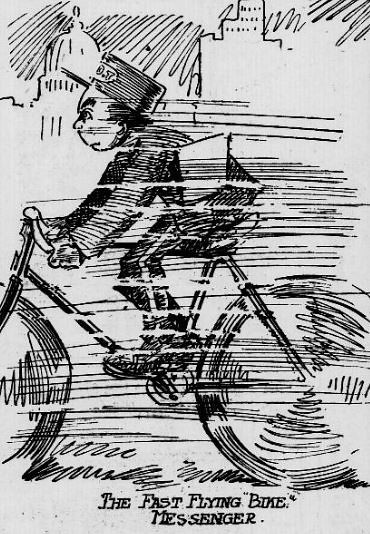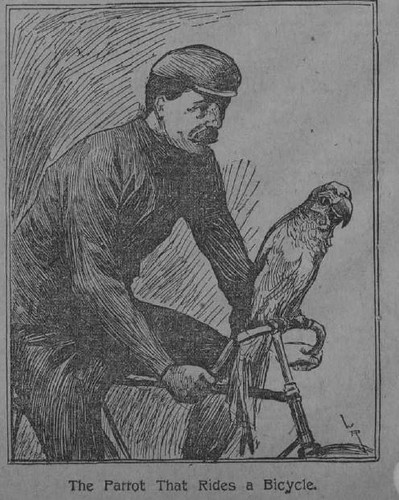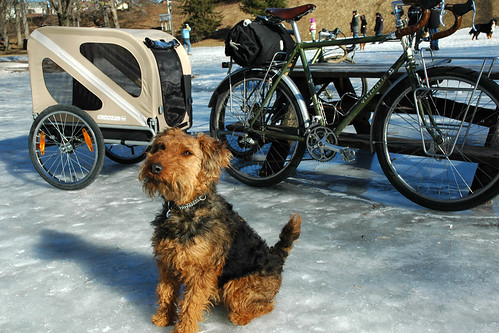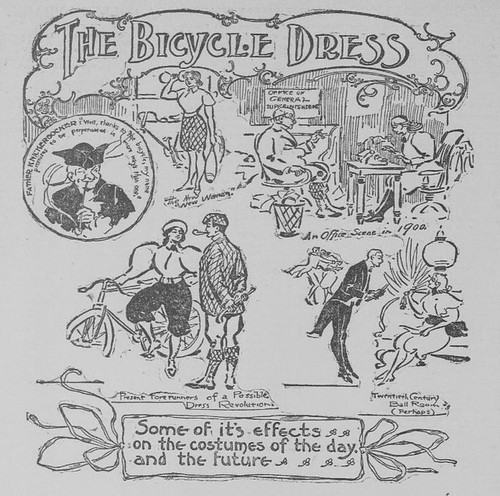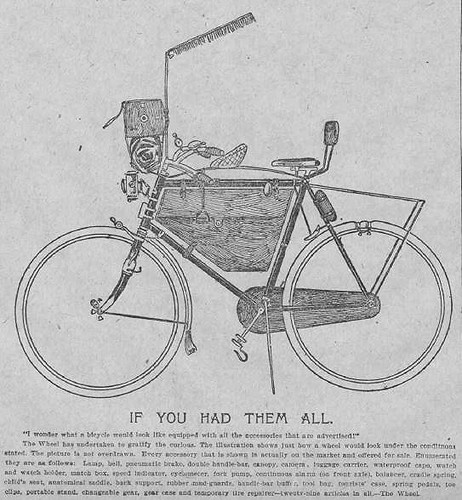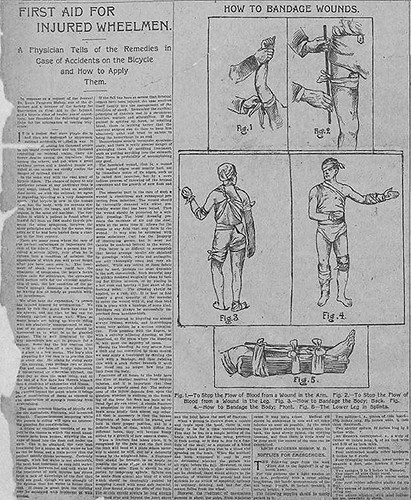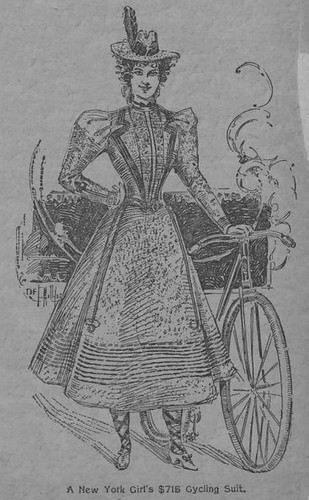
New York journal and advertiser, May 16, 1897
The New York Journal was for its time a newspaper with many pages to fill, and it often did so at this time with human interest stories of various kinds about cycling as well as "high society" - this example of an article that took up a half page with its illustration combines both.
A Gorgeous Cycling Suit to Cost $715
The most expensive bicycle suit on record has Just been ordered at one of the swellest tailors in New York.
The girl who meets the bill is worth a million in her own right, is an athletic beauty and a reigning belle in the ultra-smart set.
The suit which makes the bill is the most elaborate ever designed in this country. It is lined with silk, finished with Jewels, and will cost a lump sum of $715.50.
Two "Scott and Adie" shawls at $75 apiece will be employed in making the skirt and jacket. And, by the way, these English shawls are the very latest thing: for any sort of fancy outing suit.
The skirt will be stitched half way to the knees, with the lines of stitching not over a sixteenth of an inch apart: this is the new device to stiffen the lower part of the skirt without adding to the weight.
The edges of the jacket are also stitched and, together with the skirt, is elaborately braided, which latter touch adds some $25 to the expense.
Bloomers and linings of suit throughout will be of silk.not less than sixteen yards of silk to be used, which gives another item of 522.50. With the bloomers have been ordered a half dozen interlining of the finest fawn, at 52.50 a pair.
Loose Jackets are no longer the correct thing for the crack bicyclist. The newest waist is tight-fitting always, and worn with a series of vests and shirt fronts.
It sounds very simple just to say, "I shall order at least three vests for my new bicycle suit," doesn't It? Well, that Is what the "millionairess" in question did, and these three vests are going to cost her 525 apiece. The principal question color in her suit is green, so she has ordered one vest of sage green, one of geranium red, embroidered in black and gold, and one of white broadcloth, in silver. With these vests she will wear snow-white linen shirt embroidered fronts and black satin ties.
And $25 is not so very extravagant for a vest when you stop to consider that the garment is made when the material is wet and was to be moulded to the figure.
A Panama straw hat, fawn color and trimmed with scarlet and green, will add one $10 Item, and bicycle boots of finest leather will add another of $18. Golf stockings in mixed greens and tans will be worn In place of the high top boot. An entire box of these stockings have been ordered, as it is difficult to match them exactly. Fifteen dollars a half dozen will buy the softest and best in the shops.
But the crowning extravagance of this particular "biking" maid is yet to come. Her belt of elephant green leather is clasped with a buckle of oxidized silver set with emeralds. The buckle is in the form of two bicycle wheels; the rim of each wheel is bordered with small green stones, a single large emerald forming the hub. This trifling decoration to adorn the "slender waist" of the pretty wheelwomen will cost treble the price of her wheel! that is to say, exactly $300.

